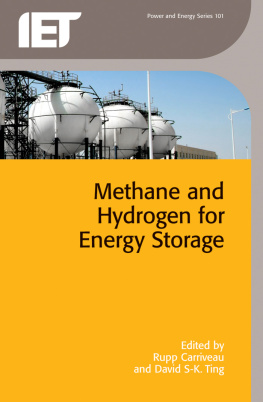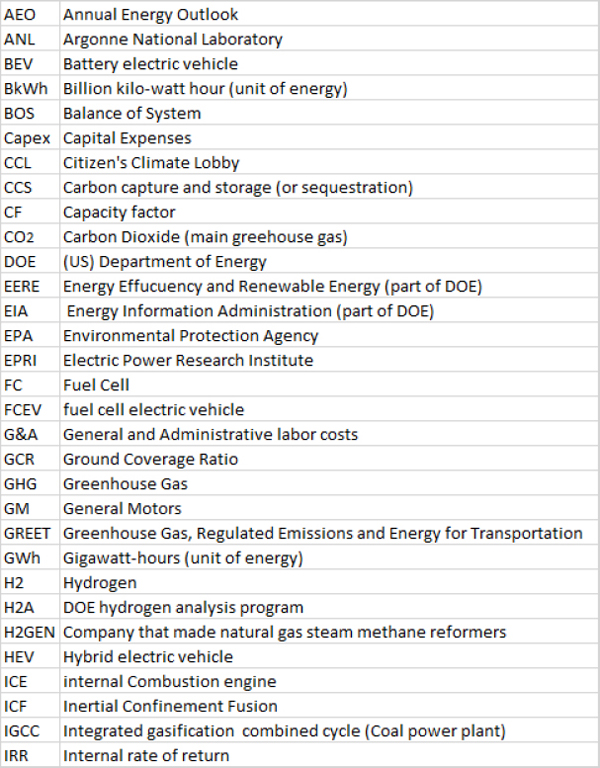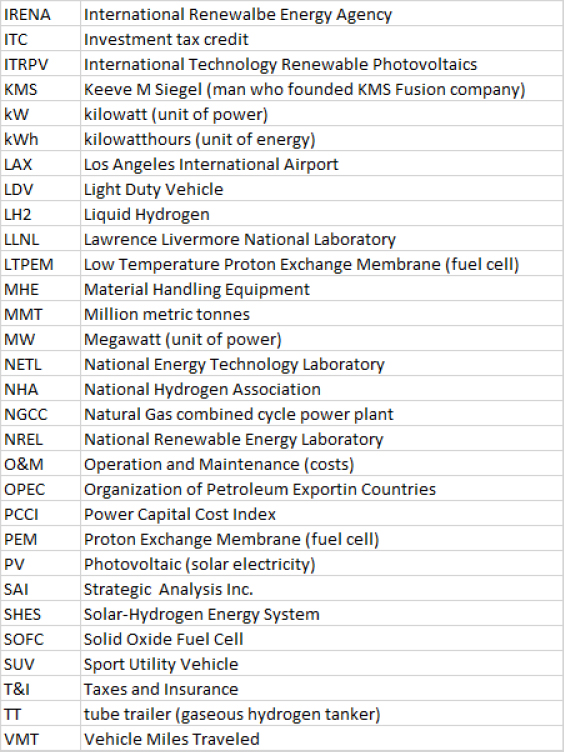ISBN-978-1-54-397425-7
eISBN-978-1-5439742-8-7
Table of Contents
Abbreviations
Foreword
The Twenty First Century will inevitably see the disruption of energy as we have known it from the beginning of the industrial age in the latter Nineteenth Century and throughout the Twentieth Century. Such disruption as to re-write the history of energy over the next one hundred years is basically inevitable for two inter-connected reasons. Technology is intervening in the production, distribution and consumption of energy in ways that astound us. And weve seen technology demonstrate its ability to move quickly. For example, telephony and information management are examples of how quickly and how much change is possible measured in just a few decades. And these technological changes have facilitated perhaps even greater social, political and cultural change with the advances and penetration of social networking across society. The impacts on our social order, political processes and systems and the relations among people from every walk of life, for good and for bad, are unlike any weve experienced in human history. Energy technology is moving very quickly, especially alternatives, intelligence, sources and methods of producing electrons and molecules, and impacting everything weve known about energy.
While technology is rapidly changing the energy we use to power the world the second reason for the anticipated extent of change is the impact of energy on the environment of the earth upon which we live. As more billions of people inhabit this planet and consume its resources and utilize knowledge, materials, technology and ingenuity to lead productive lives, the food resources, water and atmosphere of the earth are vulnerable to becoming overwhelmed by man-made impacts. We know ever more obviously that we all share responsibility for the sustainability of the planet that enables our lives and more people are ever more prepared to take the steps necessary to not only amend the damage we are doing to ourselves but to remediate the damage that has been done by our predecessors. We frankly have no choice and the probability of making environmental remediation a priority over most other priorities is growing apace. We have been fortunate in that the availability and affordability of energy has brought us to where we are today, especially the use of traditional energy such as that derived from coal, oil, and natural gas power. We have until the present utilized such energy to feed, clothe, educate, house and provide us ample amounts of water to live better than ever in history. We need to answer how we go forward to maintain the quality of life but using different energy differentially.
The costs of traditional energy are its inherent lack of sustainability. We cannot remain on the current path. We know that the risks are ultimately unacceptable. And so it is time, now, not later and not never, to do what we know we can do via technology and by way of cleaning up the earth, managing our wastes: solid, liquid and gaseous, to put Twenty First Century changes into place to assure our progeny a productive, cleaner and energy-endowed earth in advance of the Twenty Second Century. From my perspective we cannot count on government to do this for us. Neither democratic nor authoritarian governance is designed or equipped to create the changes that are needed to render the current energy system obsolete because too many interested parties are prepared to sustain it indefinitely. Similarly neither form of government will decide to take the actions to impose the order on its populations to achieve the waste management obligations that are necessary to turn back the tide of environmental devastation thats imposing itself on earth. In reality the more powerful forces of business and commerce, fueled by technologies that work and that pay for themselves and produce a return to investors, will be embraced and succeed because the people of the world will choose the outcomes they offer in place of what they have otherwise heretofore known.
To say it more precisely the energy industry will re-invent itself faster and more efficiently than any government could require or enforce through major technological change that people want because the energy they will buy will be cheaper, always available and sustainable. Industry will invest for returns that satisfy investors and consumers alike. The impacts of cleaner land, water and air will similarly incentivize the waste management industrys commercial efforts to provide the services and products that eliminate future waste and reclaim existing waste. Technology will essentially evaporate or eviscerate those molecules that negatively impact land, water and air as we direct it to. We reinvent our energy system and restore our environmental balance by successful commercial endeavors not government mandates. Recall it was business and commerce that took us to the industrial age, not government. It will be likewise to move to the age of abundant and clean energy over this century because we now see the technologies that can make it happen.
Put simply transportation electrification and carbonless energy are the inevitable drivers of this energy system transformation. Associated evolutionary but incremental technologies, e.g. improved efficiencies, will appear sufficient for a period of time. But lets consider that the normal transition period of building momentum to an ultimate tipping point. We will know were at the tipping point when the investor world experiences the monetary gains that unlock the capital required to move forward with the scale and momentum of major systems change. From then there will be no holding back. Similar to the current momentum of information management and infinite networking funded not by taxpayers but by private investors, energy and environment will experience similar support because it will make money like never before.
Sandy Thomas has taken the time and provided the detailed examination of what may well become a major mover in the investor-led transformation of our transportation and energy system. It could have such significant impact on our environmental experience that it will encourage the waste management industry like never before. He is presenting his analysis and the path to success in this new book. By focusing on the profit potential of renewable solar energy and coupling it with the energy carrier, carbon-less hydrogen, he makes the case for eventual elimination of fossil or carbon energy and the displacement of oil products for transportation by the hydrogen fuel cell vehicles of the future. He presents the template for a new Solar-Hydrogen Energy System by providing concrete examples of workable, practical, profitable solutions. He also brings to light two climate change catastrophes that are rarely mentioned with the abundance of weather-related manifestations that present themselves so frequently and so disastrously. His own perceptions about not resolving the climate future by concrete, action-oriented decisions to reduce and eliminate waste is to remind us of the risks of famine and migration on the fate of the world. Inevitably numerous regions of the earth will be unable to produce the food needed to support the populations of those regions. What will happen to the people? They will move, as people always have throughout our human history. The hungry of the earth, also being poor, will migrate to where food and energy are in abundance. Think North America and Europe as the first stops. Or they will die in place and the humanitarian disaster will be unthinkable. Or, even better, the mitigation that the Solar-Hydrogen Energy System provides to people otherwise displaced offers better solutions than we have considered up to now.













